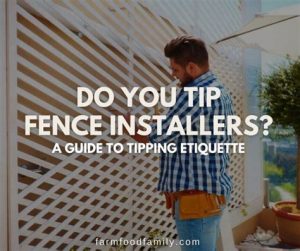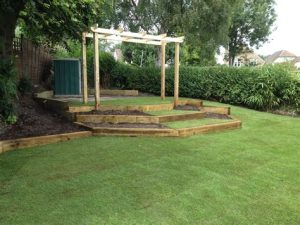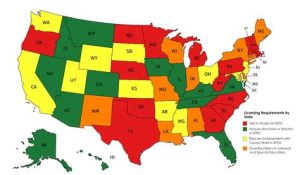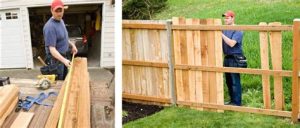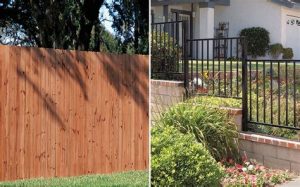Discover essential tips for DIY fence installation, from selecting materials and designs to maintenance and budget-friendly options. Ensure your project is a success!Installing a fence can be a rewarding DIY project that enhances the beauty and security of your property, but with so many styles and materials to choose from, it can also feel overwhelming. In this blog post, we’ll guide you through essential considerations for selecting the best fence for your needs. We’ll start by helping you understand the nuances of DIY fence installation, ensuring you’re well-prepared for the task at hand. Next, we’ll explore various fence materials, from traditional wood to modern vinyl, to help you make an informed choice. Additionally, we’ll delve into diverse fence designs, evaluating maintenance requirements and budget-friendly options. Whether you’re seeking privacy, aesthetic appeal, or boundary definition, this guide will equip you with the knowledge to select and install a fence that not only meets your needs but also adds charm to your home.
Understanding DIY Fence Installation
Installing a fence can significantly enhance your property’s aesthetics, privacy, and security. Understanding the process of DIY fence installation is crucial for anyone considering a fencing project. With the right tools and materials, even beginners can achieve a professional-looking result.
Before embarking on your DIY fence project, it’s important to familiarize yourself with the various fence styles that are not only functional but also easy to install.
| Fence Style | Ease of Installation | Material Type |
|---|---|---|
| Wood Panel | Moderate | Wood |
| Chain Link | Easy | Metal |
| PVC Vinyl | Moderate | Vinyl |
| Split Rail | Easy | Wood or Vinyl |
Among these styles, chain link fences and split rail fences are often recommended for beginners due to their simple installation techniques. In contrast, wood panel and PVC vinyl fences may require more planning and effort but offer a more polished appearance and greater privacy.
In addition to choosing the right fence style, you should consider local zoning laws and regulations regarding fence height and placement. Adequate planning will help ensure that your DIY fence installation goes smoothly and that your new fence stands the test of time.
Choosing the Right Fence Material
When it comes to DIY fence installation, one of the most critical decisions you can make is choosing the right fence material. The type of material you select will not only affect the look of your property but also its durability and maintenance needs.
- Wood: A traditional choice that offers a natural aesthetic. It requires regular maintenance but can be customized easily.
- Vinyl: Known for its durability and low maintenance, vinyl fencing is available in various styles and colors.
- Chain Link: A cost-effective option that provides security without obstructing views. It’s easy to install and requires minimal upkeep.
- Aluminum: Offers a high-end look and is resistant to rust; however, it may not provide the same level of privacy as other materials.
- Composite: Made from recycled materials, composite fencing offers a similar appearance to wood with enhanced durability and less maintenance.
Local climate is another factor to consider when choosing your fence material. For instance, wood may not perform well in very humid conditions, while vinyl can withstand a variety of weather situations.
Aside from aesthetics and climate suitability, think about the level of security you desire. If you’re looking to keep pets or children safe, materials like vinyl or wood can provide a more solid barrier than chain link.
Ultimately, selecting the right fence material is a balance of cost, aesthetics, and functionality.
Exploring Different Fence Designs
When it comes to choosing a fence for your yard or property, there are countless styles to consider. Each fence design serves a functional purpose while also reflecting your personal style. Below are some popular fence designs that are perfect for DIY installation.
- Wooden Fences: Classic and versatile, wooden fences can be customized in various styles, from picket to privacy. They are relatively easy to install yourself and can be stained or painted to match your home.
- Chain Link Fences: A cost-effective option, chain link fences are durable and require minimal maintenance. They are great for security and keeping pets contained, making them a popular choice for DIYers.
- Vinyl Fences: These fences come in a variety of colors and styles, offering a maintenance-free alternative to wood. While vinyl is slightly more expensive, its longevity makes it a worthwhile investment.
- Aluminum Fences: If you’re looking for an elegant solution, aluminum fences do not corrode and can mimic wrought iron designs. They provide a strong barrier while allowing visibility, which can enhance your landscaping.
- Composite Fences: Made from recycled materials, these fences are eco-friendly and mimic the look of wood without the upkeep. They are resistant to splintering and fading, making them a long-lasting option.
Before deciding on a design, consider your property’s purpose and the level of privacy you desire. Each fence type has its unique advantages, so think about what will meet your needs best.
Additionally, consider the regulations in your area. Some municipalities have specific guidelines regarding fence heights, styles, and materials. Always check local building codes before beginning your project to ensure compliance.
Ultimately, choosing the right fence design will enhance your outdoor space while providing functionality.
Evaluating the Level of Maintenance
When planning your DIY fence installation, one crucial factor to consider is the level of maintenance required for different fence styles. Some materials demand more upkeep than others, affecting not only your time but also your budget in the long run.
| Fence Material | Maintenance Level |
|---|---|
| Wood | High – Requires regular sealing, painting, or staining to prevent rot and insect damage. |
| Vinyl | Low – Generally requires occasional cleaning with soap and water. |
| Chain Link | Low – Minimal maintenance needed, mainly rust prevention. |
| Composite | Medium – Needs periodic cleaning but is resistant to pests and rotting. |
| Metal (Aluminum & Steel) | Medium – Regular inspections for rust and repainting every few years. |
Choosing a material with a suitable maintenance level can save you significant time and costs. For instance, while wood provides a classic look, its high maintenance demands may not be ideal for every homeowner. In contrast, vinyl or chain link are excellent alternatives for those seeking low-maintenance options, making them particularly appealing for busy individuals or families.
In summary, understanding the maintenance requirements of different fence materials will help you select the right option tailored to your lifestyle and preferences, ensuring your DIY project is both fulfilling and sustainable.
Considering Budget-Friendly Options
When it comes to installing a fence, budget can be a significant concern. Fortunately, there are many affordable options that can still provide durability and aesthetics.
- Chain Link Fencing: This is one of the most economical fencing options available. Chain link fences are durable, require little maintenance, and are easy to install. While they may not offer the same privacy as other materials, they provide security for your property.
- Wood Fencing: If you’re considering a wooden fence, pressure-treated lumber is a cost-effective choice. While it might require some maintenance, such as staining or sealing, it can provide a beautiful and natural look for your yard.
- PVC Fencing: Although this option may have a higher initial cost than wood, PVC is long-lasting and requires minimal upkeep. It doesn’t rot or need painting, making it a great choice for those looking for a long-term solution.
Additionally, consider the possibility of purchasing materials during sales or using reclaimed wood for a more rustic look, which can save you money while also being environmentally friendly.
Another way to save on installation costs is to tackle the project yourself. Many DIY enthusiasts find that with some planning and research, they can successfully install their own fence without needing to hire professionals.
Frequently Asked Questions
What are the most popular fence styles for DIY installation?
Some of the most popular DIY fence styles include picket fences, chain link fences, panel fences, and split rail fences.
How do I choose the right material for my DIY fence?
Consider factors such as cost, durability, maintenance, and aesthetic appeal. Common materials include wood, vinyl, and metal.
What tools do I need for a DIY fence installation?
Essential tools include a post hole digger, level, saw, hammer, nails or screws, and a measuring tape.
Are there any regulations I need to be aware of before installing a fence?
Yes, check local zoning laws, property lines, and HOA regulations to ensure your fence complies with all rules.
How long does it typically take to install a DIY fence?
Installation time can vary based on the size of your yard and the complexity of your fence design, but it usually takes a few days.
What are some tips for maintaining a DIY fence?
Regularly inspect for damage, apply wood sealant or paint as needed, and clear away vegetation that could cause rot.
Can I personalize my DIY fence design?
Absolutely! You can add decorative elements, choose unique colors, or modify the height and style to match your personal taste.
